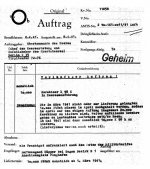This has been debated for many years, probably decades, and until now nothing plausible has been connected to any document. Many of the theories were boarding on the ridiculous, but now I think Mike has discovered the meaning. When Mike first started this thread I was unconvinced, I didn't think he had (yet) proven this adequately for it to be adopted, - while a Luftgau ordnance depot (LZa) was suspected, I had assumed it would be in Luftgau IV (Saxony-Thüringen), as that made the most sense with observed rifles (many, most, of the Luftamt builds are LZa/4) and the facts about the area being well known for such work. But it seems near certain that Mike has discovered the most likely site and scenario.
P08/Luger collectors have long held the field in advanced research, however I think they will have to move over a little and admit that Mike Steves, a rifle collector, has achieved what they haven't been able to do in at least two decades.
BTW, it looks like it is at least possible that many collectors were wrong about Robert Jensen on this as well, when Bob Jensen assumed the Ku at the wrist of a number of 98k was connected the the Kü P08 (KCN/1992, Backbone, where he clearly identified its purpose as an ordnance stamp, being next to two other known variations, page 86 if your interested), many seemed unconvinced, some thought it a fraud, another made up variation in Backbone, however this theory also supports Jensen's theory. At the very least it gives it some credibility, believably, - just too bad we can't see the full rifle, Law should have devoted a page to the rifle, assuming it was a complete matching rifle (which is probably not the case, as Backbone rifles are showing up on the auction sites, it is becoming clear many were not original-matching rifles...)









